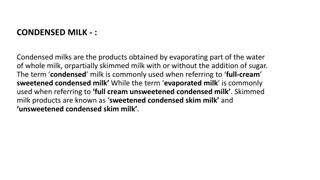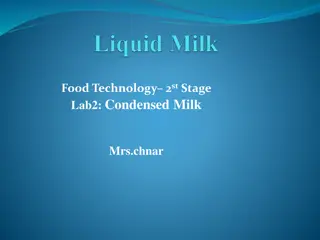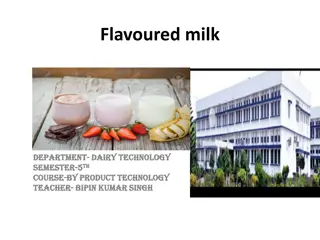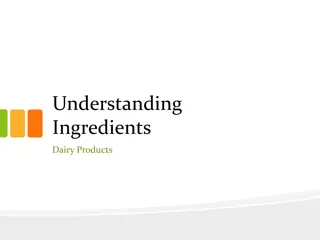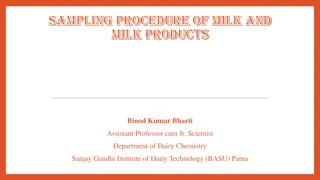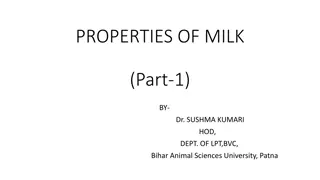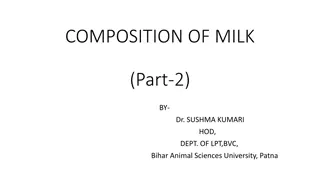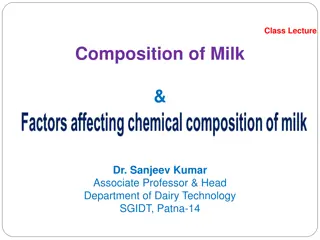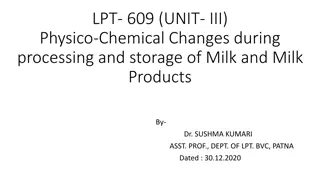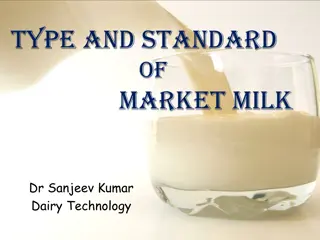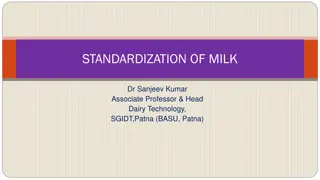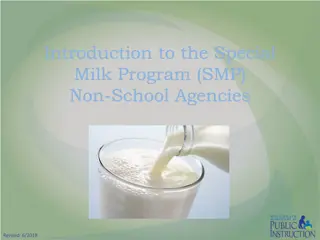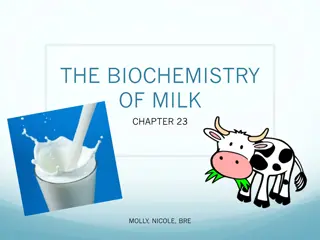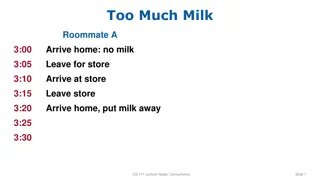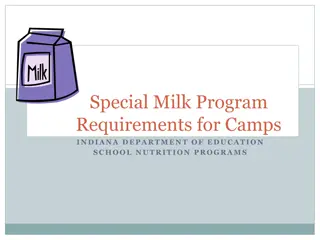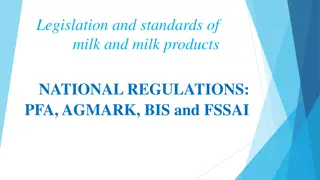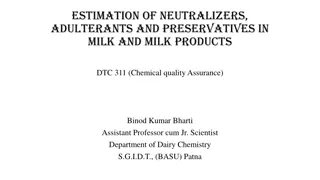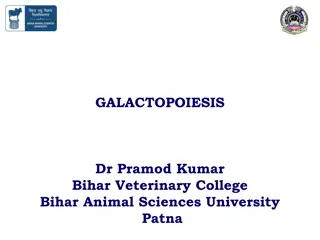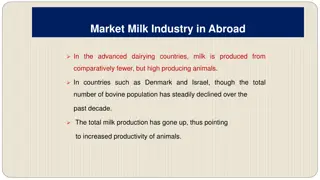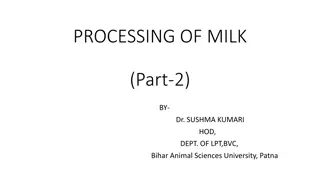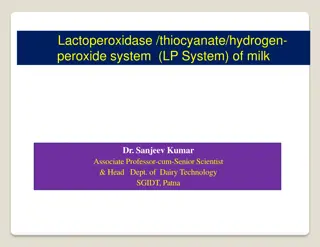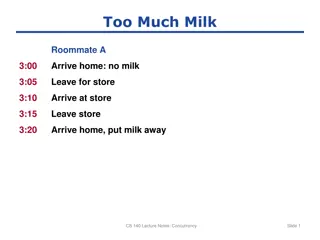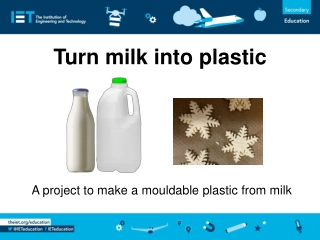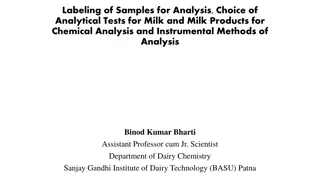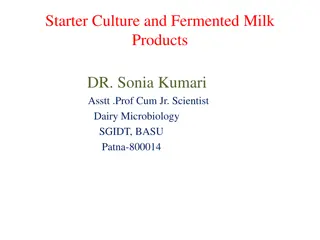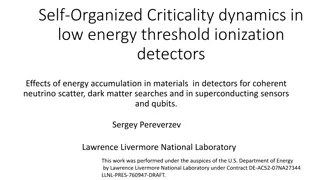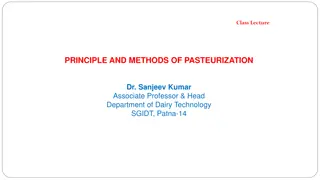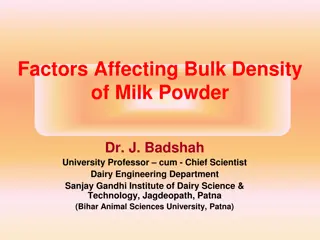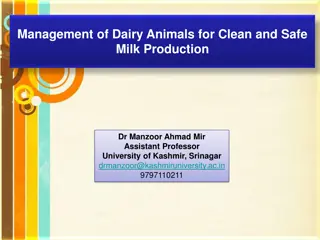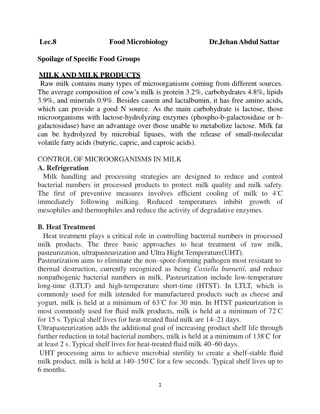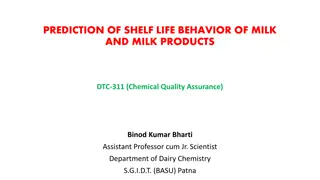Understanding Condensed and Evaporated Milk Products
Condensed milk is made by evaporating water from whole or skimmed milk, possibly with added sugar, while evaporated milk involves evaporating water from milk and sterilizing it. Standards for their fat and solids content are set by FSSR. Preparation involves varying steps like reception, cooling, filtration, standardization, stabilization, and packaging. Physico-chemical changes occur during preparation, affecting color, viscosity, and density.
Download Presentation

Please find below an Image/Link to download the presentation.
The content on the website is provided AS IS for your information and personal use only. It may not be sold, licensed, or shared on other websites without obtaining consent from the author. Download presentation by click this link. If you encounter any issues during the download, it is possible that the publisher has removed the file from their server.
E N D
Presentation Transcript
Condensed and Evaporated Milk Condensed Milk Condensed milk is the product obtained by evaporating a part of the water of whole milk, or fully or partly skimmed milk with or without the addition of sugar. Sweetened condensed whole milk and sweetened condensed skim milk have sugar as added preservative. Evaporated Milk Evaporated milk is the product obtained by evaporating a part of the water from milk (whole or skimmed) and subsequently sterlizing that concentrated milk. The ratio of concentration of milk solids is about 1:2.5 for full cream (whole milk) products and 1:3 for sweetened condensed skim milk.
FSSR (2011) standards for evaporated and sweetened condensed and evaporated milk products Product Milk fat (w/w) Milk solids (w/w) Evaporated milk Not less than 8% Not less than 26% Evaporated skimmed milk Not more than 1% Not less than 20% Evaporated partly skimmed milk Not less than 1% and not more than 8% Not less than 20% Evaporated high fat milk Not less than 15% Not less than 27% Sweetened condensed milk Not less than 9% Not less than 31% Sweetened condensed skimmed milk Not more than 1% Not less than 26% Sweetened condensed partly skimmed milk Not less than 1% and not more than 9% Not less than 28% Sweetened condensed high fat milk Not less than 16% Not less than 30%
Flow Diagram for the Preparation of Condensed Milk Reception of Milk Cooling Filtration /Clarification Standardization Stabilization Forewarming
. Addition of sugar Concentration Homogenization (optional) Cooling Seeding and lactose crytilization Packaging Storage
Flow Diagram for Preparation of Evaporated Milk Reception Cooling Filtration/Clarification Standardization Forewarming
. Evaporation Homogenization Cooling Pilot Sterilization Test Canning Sterilization Cooling Shaking Storage
Physico-Chemical changes during Preparation During the manufacture of condensed milk certain physical changes such as development of brown colour, changes in viscosity are noticed besides increase in density/specific gravity. One of the important chemical changes noticed is decrease in pH. These changes occurring in the physico-chemical properties in condensed milk due to various processing conditions have profound effect on the final quality and self-life and storage stability of the product. Some of these physico-chemical properties are discussed below: i) Density/Specific Gravity: Removal of water in the manufacture of condensed milk increases the total solids
. content. Because of the total solids concentration the density/sp. gr. of condensed milk increases. The sp. gr. of concentrated milk is product. Baume hydrometers are widely used for sp. gr. measurements. ii) Freezing Point: Freezing point of milk is quite constant, however it is always lower than that of water and varies with composition of milk. Removal of water as well as addition of soluble substances, such as sugar, has direct effect on the freezing point of condensed milk. iii) Viscosity: Viscosity of condensed milk varies greatly according to the composition, processing conditions and storage period. Increase in concentration increases the viscosity. Homogenization and low temperature storage of concentrated milk is highly important for successful marketing of the product. Too high or low viscosity is not desirable in the product. Low viscosity tends to leave objectionable sugar sediment in condensed milk and fat separation in evaporated milk. Too high viscosity causes gel
. formation and mineral deposits in evaporated milk. iv) Colour and Flavour: Objectionable brown colour is sometimes found in condensed milks. Exposure to high heat during manufacture and storage of condensed milk tends to darken their colour and develope a cooked flavour. Various factors contributing to the brown discolouration and cooked flavour production, are heat treatment, total soils concentration, pH condition, addition of compounds like sugar stabilizers, storage temperature and time of storage. v) Changes in pH: A decrease in pH as compared to milk can be expected in condensed milks during manufacture because of the processing steps such as preheating, concentration and sterilization. Decrease in pH has definite effect on the stability of concentrated milk towards heat sterilization.
Sweetened Condensed Milk Age Thickening The main change in sweetened condensed milk during storage is presumably age thickening and, finally, gelation. Sweetened condensed milk is far more concentrated than evaporated milk. However, it does not thicken markedly faster with age. It is usually assumed that added sucrose inhibits age thickening. Sucrose increases the Ca activity. A difference with evaporated milk is that an initial decrease in viscosity before age thickening is not observed. The viscosity in sweetened condensed milk increases almost linearly with time. The following main factors affect age thickening in sweetened condensed milk: 1.) The variation in the type of milk and season occurs among batches of milk. 2.) Higher preheating treatment yields higher initial viscosity, and gel can form earlier. Hence, UHT heating is now generally applied. 3.) The addition of sugar at later in evaporating process results in lesser age thickening. 4.) Higher concentration factor gives more age thickening.
. 5. )The influence of added salts varies widely and depends on the stage at which it is added. Salts are added up to 0.2%. Adding a small amount of sodium tetrapolyphosphate (e.g.0.03%)mostly delays age thickening considerably, where as adding more may have the opposite effect. 6.)Age thickening considerably increases with storage temperature. Maillard Browning Ongoing Maillard reactions are inevitable. Brown discoloration is stronger as the storage temperature is higher, the milk is evaporated to a higher concentration, and more intense heating is applied. Additional Millard reactions occur if the added sugar contains invert sugar. Oxidative Changes
. These changes can be prevented by keeping head space oxygen to a minimum. Lactose Crystallization Sweetened condensed milk contains around 38 to 45 g lactose per 100 g water. The solubility of lactose at room temperature is about 20 g per 100 g water, but in sweetened condensed milk the solubility is about half as much due to the presence of sucrose. It implies that 75% of the lactose tends to crystallize, meaning about 8 g per 100 g sweetens condensed milk. Due to the high viscosity, nucleation will be slow and only a few nuclei would be formed per unit volume of milk, leading to large crystals. Without special measures, the product will obtain a relatively high quantity of large crystals. These crystals settle and are
. responsible for a sandy mouth feel. Although the crystals may not be so large as to be felt singly in mouth, they can be large enough to cause a non-smooth impression. To avoid this, they should be smaller than about 8 m in length. Preventing crystallization is not possible and, accordingly, a large number of crystals should be obtained. Satisfactory results can be reached by using seed lactose. Adding 0.03% seed lactose represents 0.004 times the amount of lactose to be crystallized. The final size of the crystals in the product should not exceed 8 m. Consequently, the lactose would contain enough seed crystals (one per crystal to be formed) if its crystal size does not exceed about (0.004 x 8 )1/3 ,i.e., 1.25 m. Such tiny crystals can be made by intensive grinding of -lactose hydrate.
. . Thank You


